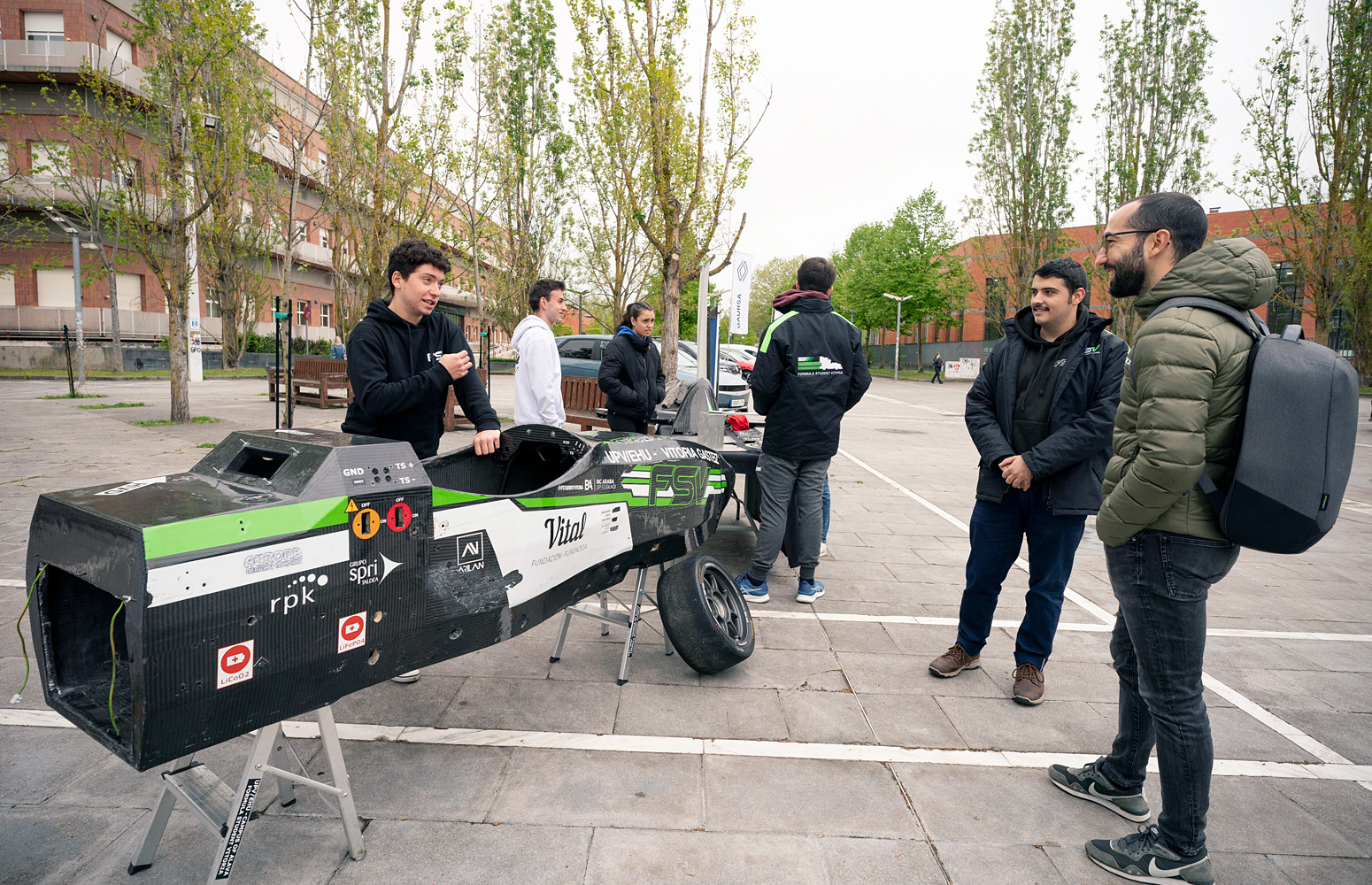The cover of the latest issue of the prestigious journal Advanced Science echoes a paper by the UPV/EHU lecturer Gorka Orive in which he reviews the most salient advances in the merging of human beings and machines applied to the field of medicine and biotechnology. The analysis deals with the impact that cyborgs –a blend of humans and machinery– are set to have on the future of medicine: ranging from portable, in vivo devices designed to monitor our health, to hybrid prostheses that replace damaged tissue or organs, and including smart implants with superhuman properties.
-

In memoriam: Arturo Muga
-

Violeta Pérez Manzano: «Nire ahotsa ijito bakar batengana iristen bada eta horrek inspiratzen badu, helburua bete dut»
-

Azukrea eta edulkoratzaileak. Zer jakin behar dut?
-

Athletic zuri ta gorria, zu zara nagusia, baina zertan? Gizonezko futbol profesionalaren gaitasun (im)mobilizatzaileari buruzko hausnarketa soziologikoa
-

Iñigo Argomaniz sustatzaileak eta Eli Arabaolaza ikertzaileak irabazi dute XXIII. Donostiako Orfeoia-UPV/EHU Saria
The UPV/EHU-University of the Basque Country analyses the impact of cyborgs on the future of medicine
- Research
First publication date: 21/09/2018

A comprehensive, up-to-date overview of the field of cybernetic medicine driven by the development of bio-electronic materials is the work conducted by the UPV/EHU lecturer Gorka Orive, together with the team led by Alireza Dolatshahi-Pirouz, lecturer at the Technical University of Denmark, and which has resulted in a scientific paper published by the prestigious journal Advanced Science. The analysis has been selected as the front cover of its latest issue.
In the paper (‘Blending electronics with the human body: a pathway toward a cybernetic future’), its authors explain the various steps taken to try to bring about in the future scientific achievements that recall science fiction films, such as the creation of bioelectronic skin and tattoos that detect chronic diseases, or chips implanted in the brain capable of moving muscles in our body at will. Other ongoing pieces of research have to do with bionic eyes to restore vision, or implants that confer physiological properties that surpass our possibilities.
Some of these advances have already been turned into healthcare products used nowadays, while others paint a future scenario that is not so far away in which cyborgs will be improving our life quality. Researchers at the MIT (Massachusetts Institute of Technology) have, for example, managed to cultivate neurons in a lab that can then be used to control robots, or develop hybrid ear implants with properties similar to those of our ears.
“These advances will have the benefit of the boom in 3D bioprinting technology and, in the future, it will be possible to print hybrid structures that combine biology and electronics in a fast, accurate way,” explained Gorka Orive, who went on to say that “the advance towards the cyborg era is exciting, but is not without risks, difficulties or ethical arguments”.
The paper now published, which runs to nearly 40 pages, has emerged with the intention of being a useful tool for doctors and researchers interested in the advance and future of cybernetic medicine.
Additional information
Dr Gorka Orive belongs to the NanoBioCel research group at the UPV/EHU’s Laboratory of Pharmacy and Pharmaceutical Technology which, in turn, is part of the CIBER-BBN platform (Biomedical Research Networking Centre in Bioengineering, Biomaterials and Nanomedicine). He also lectures at the University Institute for Regenerative Medicine and Oral Implantology, has over 230 scientific publications and an H-index of 54 (google scholar).
Bibliographic reference
- Blending Electronics with the Human Body: A Pathway toward a Cybernetic Future
- Advanced Science (August 2018)
- DOI: 10.1002/advs.201700931


